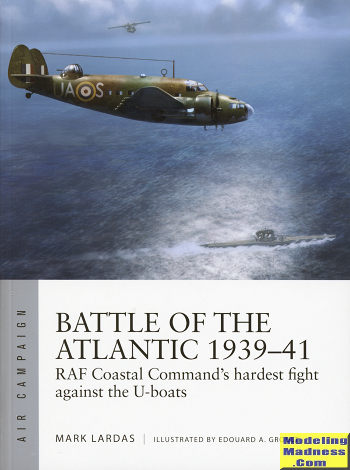 With the start
of WWII, it is pretty obvious to the leadership of the Kriegsmarine, that the UK
needed to be denied supplies. Island nations are quite vulnerable to blockades
and since the Royal Navy would have effectively stopped any such attempt by the
Germans (who had a fairly small surface fleet), then it was going to be the
submarine that would have to do the job.
With the start
of WWII, it is pretty obvious to the leadership of the Kriegsmarine, that the UK
needed to be denied supplies. Island nations are quite vulnerable to blockades
and since the Royal Navy would have effectively stopped any such attempt by the
Germans (who had a fairly small surface fleet), then it was going to be the
submarine that would have to do the job.
Problem for the Germans was that the war started too soon. It
was supposed that Germany would simply be able to grab Poland as it did Austria
and Czechoslovakia. What this meant on the nautical side was that there simply
were not enough operational submarines with the sort of range needed to properly
wage war. Most German submarines were Type II coastal boats without the range or
carrying capacity to go into the open ocean to hunt ships. Though the Navy had
been pressing for increased boat building, this never really came about until
after hostilities began. Since it took a fairly long time to build a U-boat,
Germany went to war incapable of doing its proper job.
Of course, the Royal Navy wasn't in much better shape. There
was no real plan in place on how to combat submarines. Surface ships had the
only real equipment to track and sink submarines, but these ships were spread
pretty thin. Not only that but the convoy system was not immediately put into
place making it fairly easy for subs to sink transports. Indeed, in the early
war, it was not uncommon for submarines to surface and sink ships using deck
guns.
Aircraft were pretty useless as the vast majority of planes
used for patrol not only had poor range, but were unable to carry weapons
sufficient to even damage a U-boat. This was brought to light when an Anson (the
most numerous ASW patrol plane in the first years) accidentally dropped a 125lb
sub bomb on a surfaced RN submarine. It did practically no damage. This was a
major eye-opener as it was assumed that these bombs were effective. The only
plane capable of long distance patrolling with bombs that could damage or sink
subs was the Sunderland, and those were few and far between. No surprise that no
German submarines were sunk by aircraft in the first year of the war. Of course,
the Germans did not know this and U-boats submerged at the first sight of a
plane. This alone staved off several convoy attacks.
All of this meant that U-boats were very successful early in
the war. Had the Germans actually had enough boats available, things could
easily have been quite different, but they did not. In addition, the Luftwaffe's
FW-200 Condor aircraft were also quite successful during this time. Even convoys
had no protection against these planes as they were often attacked beyond the
range of shore based fighters.
Of course, all this changed with the introduction of aircraft
such as the Catalina, Hudson, Liberator, and B-17, which had the range and the
carrying capacity for effective ASW patrol, but that wasn't until 1941 that they
were available to Coastal Command. The development of aircraft catapulting
merchant ships helped in some cases against the Condor, but it was the
development of the 'jeep' carrier that truly turned the tide in the ASW war
(along with breaking the Enigma code).
This book covers the ASW war (or lack thereof) from the start
of the war until into 1941. It provides insight into the constant changing of
equipment and tactics on both sides as the battle to stay ahead of the game
switched from side to side. It also looks as some specific events where one side
held the advantage and the results of those events. Add to it some superb maps,
period photos and excellent art work to provide a fairly complete picture of the
war situation. It makes for an excellent read and is most
highly recommended.
January 2020
Copyright ModelingMadness.com. All rights reserved.
For more on the complete line of Osprey books and to order
this one, visit
www.ospreypublishing.com
.
If you would like your product reviewed fairly and quickly, please contact
the editor or see other details in the Note to
Contributors.
 With the start
of WWII, it is pretty obvious to the leadership of the Kriegsmarine, that the UK
needed to be denied supplies. Island nations are quite vulnerable to blockades
and since the Royal Navy would have effectively stopped any such attempt by the
Germans (who had a fairly small surface fleet), then it was going to be the
submarine that would have to do the job.
With the start
of WWII, it is pretty obvious to the leadership of the Kriegsmarine, that the UK
needed to be denied supplies. Island nations are quite vulnerable to blockades
and since the Royal Navy would have effectively stopped any such attempt by the
Germans (who had a fairly small surface fleet), then it was going to be the
submarine that would have to do the job.